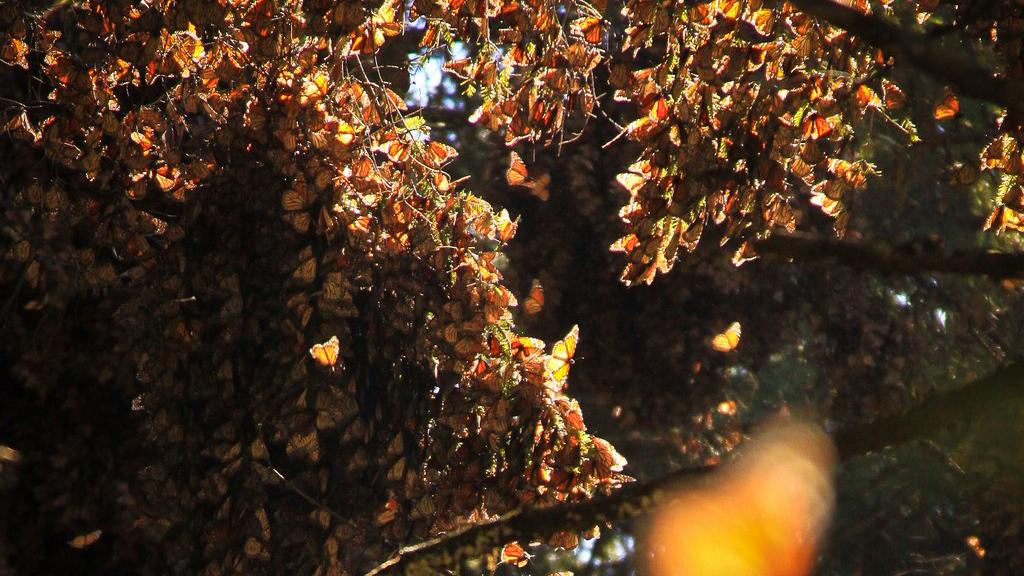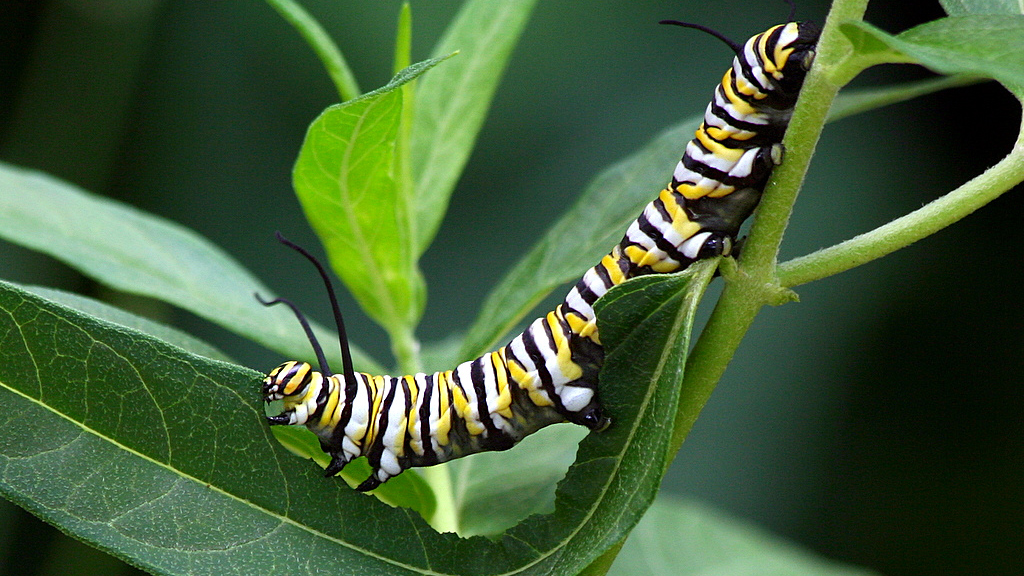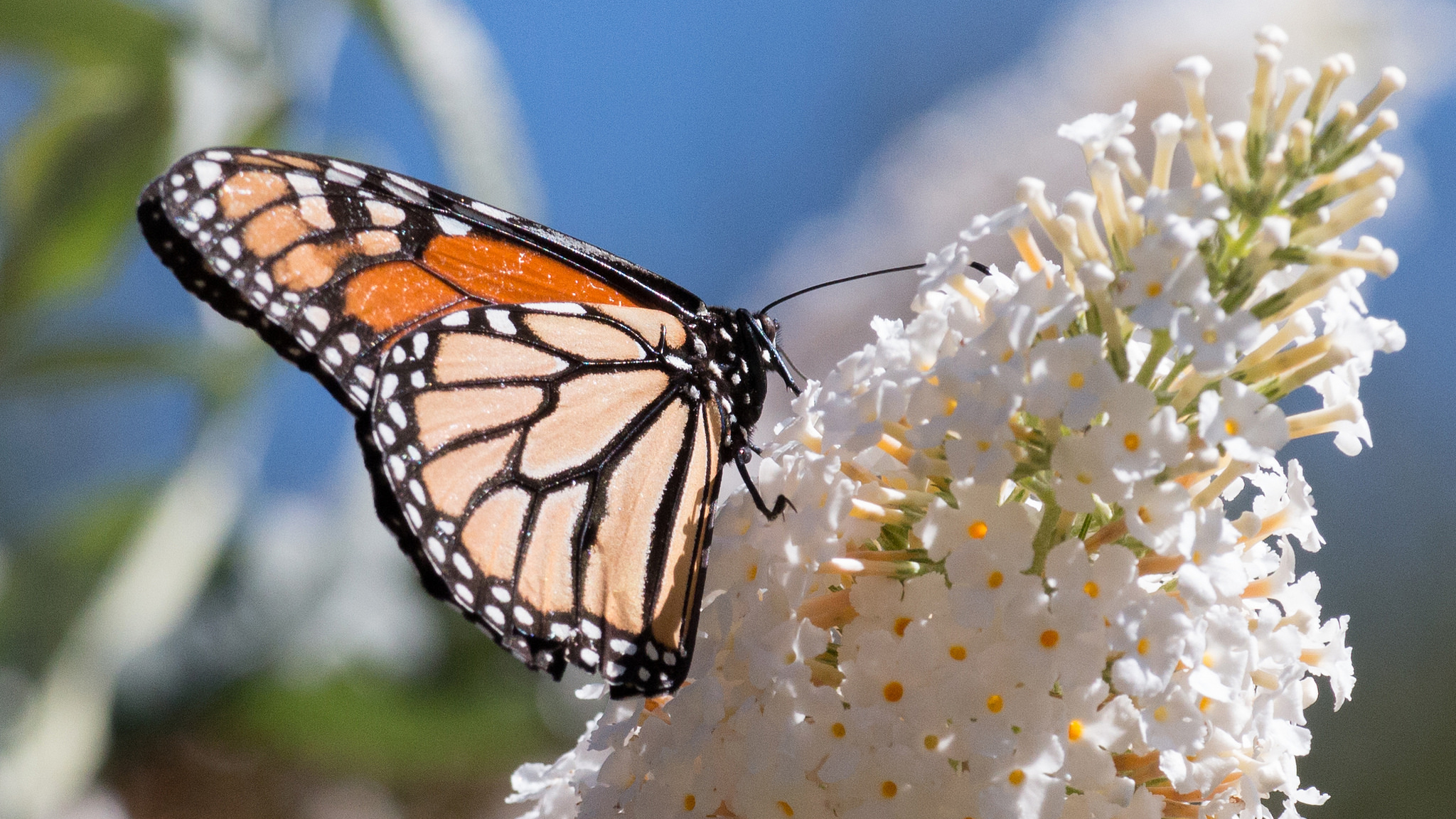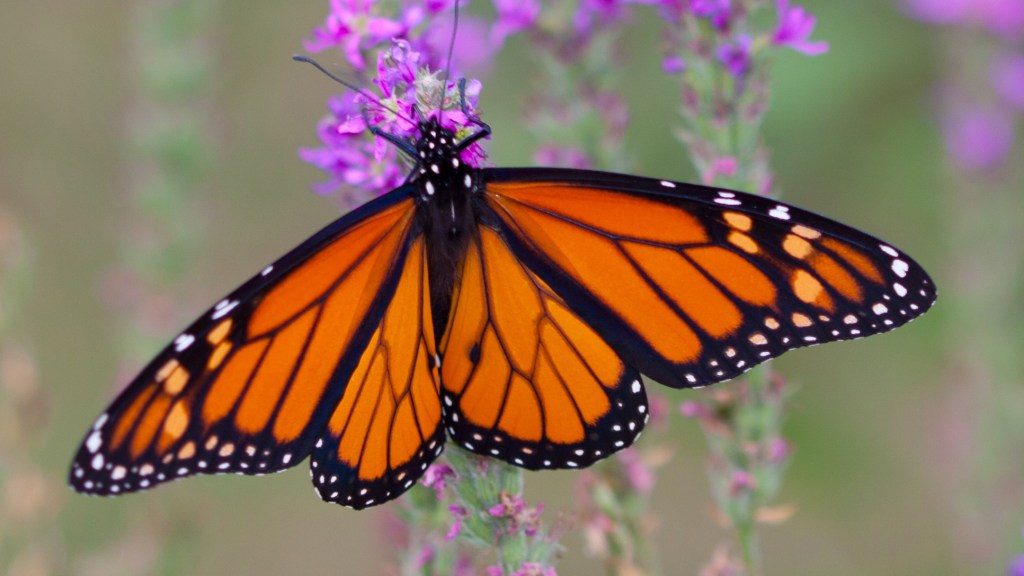Twenty years ago, monarch butterflies occupied so much area in Mexico during the winter you could see it from space. It totaled about 20 hectares, or almost 50 acres, with millions if not billions of butterflies clinging to trunks and branches of trees.
Today, that area is around 4 hectares. The previous year had 1.1 hectares, says Brice Semmens, Assistant Professor at the Scripps Institution of Oceanography at the University of California San Diego.
Semmens was the lead author on “Quasi-extinction risk and population targets for the Eastern, migratory population of monarch butterflies” published recently in the journal Scientific Reports. It is one paper in a long line of sobering butterfly news.
The monarch likely won’t ever become extinct, Semmens says. Small populations live scattered throughout Mexico, the central U.S. and Canada, and some were moved to places as far away as Hawaii and New Zealand.
But the massive eastern migrations between central Mexico and Canada that have inspired people for centuries could be lost.
Semmens’ paper used expert opinion to determine how little occupied winter habitat in Mexico would be needed to sustain a viable migratory population – and at what point it simply may not bounce back.

The authors used estimates of extinction rates with various overwintering sizes, and conclude monarchs need about 6 hectares, or about 15 acres, to cut the risk in half.
But in order to understand how to boost overwintering numbers, people must first understand what hazards the eastern monarch faces.
Semmens and University of Minnesota monarch expert Karen Oberhauser recently walked the Cool Green Science Blog through each threat, as well as some possible solutions.
Habitat Loss
This one isn’t a surprise. Many North American species face some kind of habitat loss, but the eastern monarch is struggling throughout its three-country migration route.
In the winter, the butterflies need insulated cover in the form of dense Mexican forests. While the area is protected by the Mexican government, its edges are still being eaten away by illegal logging.
But also critical are the other migratory stages. In each one between Mexico, the Midwestern U.S. and southern Canada, monarchs need milkweed. They can only reproduce with the flowering plant.

And since each annual migration might create four or even five generations of monarchs, less milkweed directly correlates to fewer butterflies, according to Oberhauser. Unfortunately, the plant has been effectively removed by the millions from most agricultural fields and neighboring areas throughout the Midwest.
“The hopeful thing is that monarchs can really use habitat in a lot of different places,” she says. “It’s not like we’re talking about spotted owls that need hundreds of acres of untouched forest. They can find a milkweed plant growing in a crack in a sidewalk.”
Climate Change
Monarchs suffer under drought and severe storms, two weather events becoming more common with climate change.
“If you imagine an EKG or something, a line going up and down, insect populations in general are very erratic,” says Oberhauser. “They are very driven by weather conditions and what we call stochastic variation, variation we don’t have control over and can’t predict.”
The biggest risk with storms is freezing to death. Butterflies can survive temperatures down to about 17 degrees Fahrenheit if the cold is dry. But temperatures of about 25F with rain often mean death. A single storm in 2002, for example, killed almost 80 percent of the monarch population.
“That year the population was pretty high,” Oberhauser says. “But two years ago when the population was down to under 1 hectare, if we lost 80 percent, the number might have been too small to be a viable population.”
Pesticides and Herbicides
Milkweed used to grow scattered throughout corn and soybean crops across the Midwest. But more efficient agriculture practices and products such as Roundup have nearly eliminated monarch habitat, according to Semmens.
“It’s not that the use changed, it’s still agriculture, but the weed control changed and made it hard for monarchs,” he says.

Monarchs are also suffering from something called neonicotinoids, a relatively new class of insecticides with poison growing in all tissues of the plant. They make the plant itself poisonous to insects.
So what can you do?
Leaders of all three North American countries have decided monarchs are a priority. As a result, the U.S. government, through the departments of the Interior and Agriculture, are creating strategic goals for increasing habitat.
The U.S. needs about 1.5 billion new stems of milkweed, or about 500 million new plants, to help reach the 6 hectare overwintering goal, says Wayne Thogmartin, a research ecologist with the USGS.
“It will require participation from all sectors of society,” he says. “If we try and rely on any single sector we won’t reach our goals. If we say this is an agricultural problem and we need to rely on them to solve it, it won’t get solved. If we say we will achieve this by having everyone plant milkweed in their backyard, it won’t solve the problem. We need everyone’s participation.”
But each person can make a difference.
Here are a few places the researchers suggest to start:
- Create habitat in your backyard, school or office. If you can, remove some grass and put in a garden. Each new plant makes a difference.
- Sign up for monarch citizen science projects and collect data for researchers. For more information, go to monarchjointventure.org.
- Ask before you buy. If you want to plant a pollinator-friendly garden, ask to be sure the seeds or plants weren’t treated with neonicotinoids.
- Talk to your friends, neighbors and relatives.
- Donate to organizations working for conservation of habitat including The Nature Conservancy, the Monarch Joint Venture and the Monarch Butterfly Fund.




I am a big advocate for butterflies, bees and birds. I would love to learn more about protection and production!
I have been planting milkweed in my yard for years. The last two weeks I have been very excited to see more than a dozen caterpillars on all of the plants. They have eaten them down to the stems. I am hoping they survive to hatch more monarchs. I live in San Antonio, Texas.
good job on the monarch butterflies
Christine, have you checked with the major suppliers of garden seeds to find out which use neonicotinoids and which do not? If so, please share the results of those queries.
Hi Mark, I think you would be interested in this pollinator-friendly seed directory from Beyond Pesticides: https://www.beyondpesticides.org/programs/bee-protective-pollinators-and-pesticides/what-can-you-do/pollinator-friendly-seed-directory
1.If a milk weed plant has been treated with nicatinoids, will a plant grown from its germinated seeds also be poisonous?
2.Could nurseries grow nic. free plants in their greenhouses (isolation would make them pest-free without nic) for sale as “safe plants”?
3.Can we get Trump to see protecting monarchs as financially profitable?
Hi Linda, Those are good questions. I could not find information to directly answer your first question, but this article (http://sitn.hms.harvard.edu/flash/2014/seeds-of-poison-new-research-suggests-that-the-worlds-most-widely-used-insecticide-is-linked-to-declining-bird-populations/ ) has this related information: “Thus, a flowering plant seed-treated with imidacloprid [a neonicotinoid] will contain the chemical in its pollen. Furthermore, imidacloprid that isn’t taken up by plants will be carried in the water run-off from the field. In addition to its water solubility, imidacloprid has a half-life in soils greater than 1000 days, meaning that after nearly three years, half of the initial concentration of imidacloprid will still remain in a given area (2). The long lifetime and water solubility of imidacloprid mean that it can be widely dispersed from areas where it was first applied and it can accumulate in soils and water over time” As to your second question, nurseries can grow neonic. free plants in greenhouses (and outdoors), there are even neonic. free plants avaialable at some major retailers: https://www.mnn.com/your-home/organic-farming-gardening/stories/neonicotinoids-what-home-gardeners-need-to-know I’m not sure anyone has an answer to the third question yet.
WE TRY SO HARD AND WASPS ARE NOW CARNIVORS, THEY ARE RUTHLESS TO A CATAPILLAR. We used to have to buy plants over and over just five years back, now, they don’t even make it and nobody in the beltway cares
May I share this educators, administrators and community partners?
Attempting to convince folks to plant milkweed for Monarchs.
Can you send this articl to brownsm@uhcl.edu?
Looking forward to a response.
Thank you,
Sheila
Excelent post! you can find more info about the monarch butterfly here https://www.ecotravelmexico.com/monarch-butterfly-tour-in-mexico.php